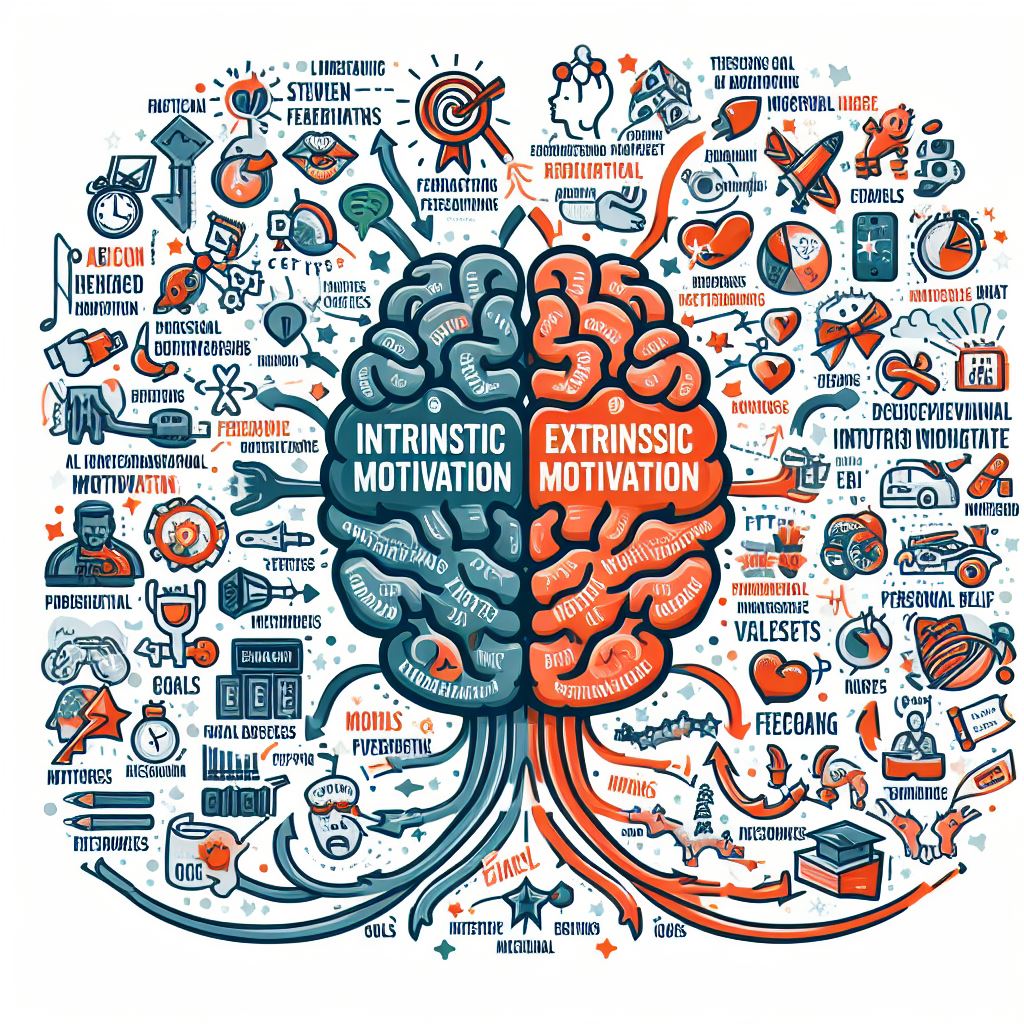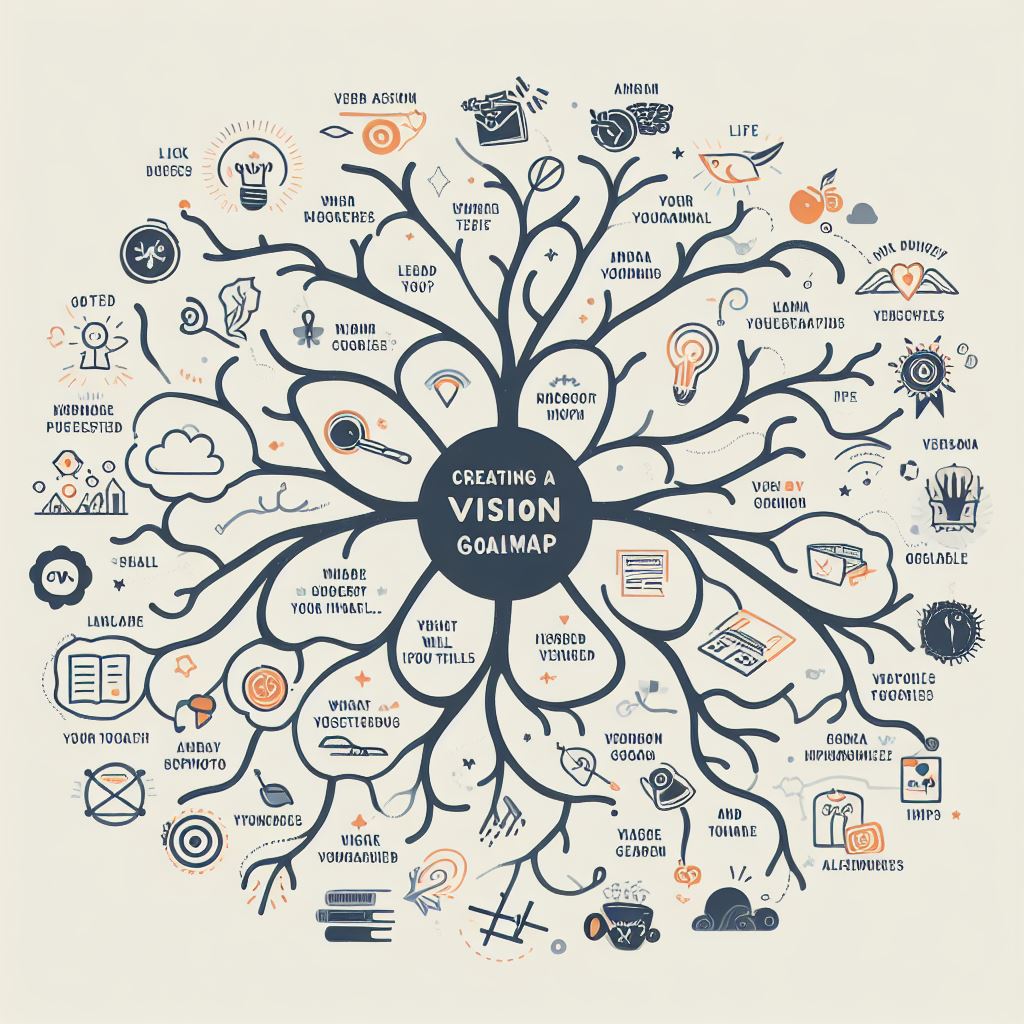Unlocking the vast potential within ourselves often starts with a single spark – a spark called motivation. In the symphony of life, motivation is the driving force that propels us towards our aspirations, turning distant dreams into tangible achievements. As we embark on this journey together, let’s demystify the essence of motivation, understand its definition, and unravel its profound importance in pursuing our goals.
Defining Motivation
At its core, motivation is the fuel that ignites our actions, a powerful force that propels us to strive for more. The internal drive pushes us beyond our comfort zones, urging us to take the next step even when the path seems challenging. Motivation is not a fleeting emotion; it’s a sustainable flame that, when nurtured, can illuminate the darkest corners of self-doubt and hesitation.
The Crucial Role of Motivation in Goal Achievement
Imagine a ship without a compass, meandering aimlessly in the vast ocean. Similarly, without motivation, our goals might remain distant islands on the horizon. Motivation is the compass that guides us, providing direction and purpose. The catalyst transforms dreams into reality, ensuring that every step we take is purposeful and aligned with our deepest desires.
A Glimpse into the Motivational Tapestry
In the following pages, we will delve into the intricate art of motivation. We’ll explore the psychology behind motivation, dissecting theories that unlock the secrets of sustained drive. From the delicate balance between intrinsic and extrinsic motivation to the fascinating science of neurotransmitters and hormones, we’ll unravel the threads that weave the motivational tapestry.
Understanding Motivation: Unveiling the Driving Force
Motivation is a mysterious force that propels us forward, shapes our actions, and steers us toward our goals. To navigate this complex landscape, let’s explore the theories, the intrinsic versus extrinsic dynamics, the fascinating science behind motivation, and the factors that sway its course.
Motivation Theories
Our journey begins with theories that unravel the intricate web of motivation. The self-determination theory posits that humans have innate psychological needs – autonomy, competence, and relatedness. Fulfilling these needs fuels our motivation. Consider it your internal compass, pointing you toward activities that align with your desires.
On the other hand, the goal-setting theory emphasizes the power of clear objectives. When goals are Specific, Measurable, Achievable, Relevant, and Time-bound (SMART), they become potent motivators. Think of it as setting sail with a destination in mind, each milestone inching you closer to success.
Intrinsic vs. Extrinsic Motivation

Motivation wears different cloaks – intrinsic and extrinsic. Intrinsic motivation is the fire that burns from within. It’s the joy in the process, the sheer satisfaction of mastering a skill. Extrinsic motivation, on the other hand, comes from external factors like rewards or recognition. Imagine a plant thriving for the sheer joy of growth (intrinsic) and the nourishment it receives from the sun (extrinsic).
Consider a student studying not just for grades (extrinsic) but also for the love of learning (intrinsic). Balancing these motivators is the key to a sustainable drive.
The Science Behind Motivation
Beneath the surface of our actions lies a fascinating interplay of neurotransmitters and hormones. Dopamine, the ‘reward neurotransmitter,’ surges when we achieve a goal, reinforcing the behavior. Picture it as the applause for a well-executed performance.
Serotonin, the ‘happiness neurotransmitter,’ influences our mood and overall well-being. Imagine it as the sunshine on a cloudy day, brightening our perspective.
Cortisol, the ‘stress hormone,’ can either be the villain derailing our motivation or the hero, nudging us out of complacency. Understanding this biochemical ballet helps us harness the chemistry of motivation.
Factors Affecting Motivation
Motivation is a delicate dance influenced by various factors. Self-efficacy, the belief in one’s ability to succeed, acts as the wind beneath our wings. Imagine it as a steady breeze propelling you forward.
Our environment plays a crucial role – a supportive workplace or a conducive study space can be the fertile ground where motivation blossoms. Conversely, a toxic environment can stifle even the most potent motivational seeds.
Rewards act as signposts on our journey, marking achievements and providing the occasional boost. Picture them as milestones on the road to success.
Identifying Your Goals: The Blueprint for Success
In the grand tapestry of motivation, goals are the vibrant threads weaving our aspirations into reality. Yet, setting goals can be a labyrinthine task, filled with uncertainties. Fear not; let’s navigate this maze together, unraveling the art of setting goals that propel us forward.
Setting SMART Goals
Imagine a ship without a destination—a journey without purpose. That’s what goals are – the lighthouses guiding us through the vast sea of possibilities. To make them effective, they must be SMART: Specific, Measurable, Achievable, Relevant, and Time-bound.
- Specific: Your goal should be precise, like a skilled archer aiming for the bullseye. Instead of “Get fit,” aim for “Lose 10 pounds in two months.”
- Measurable: Progress is our North Star. Whether it’s tracking calories, steps, or words written, measurable goals keep us on course.
- Achievable: Goals should stretch us but not break us. Picture climbing a mountain – each step challenging but leading to a breathtaking summit.
- Relevant: Align goals with your core values and passions. A fitness goal might align with your value for health, ensuring sustained motivation.
- Time-bound: Time adds urgency and structure. Without a deadline, goals risk drifting into the abyss of procrastination.
Aligning Goals with Values and Passions
Goals resonate when they harmonize with our values and passions. Picture your life as a melody – goals, the notes weaving seamlessly into the symphony. If health is a core value, a fitness goal becomes a rhythmic beat in the composition of your life.
Consider your passions as the fuel – a writer’s goal aligns with their passion for storytelling, propelling them toward literary heights.
Creating a Vision Board or Goal Map

Visualization is the secret ingredient to manifesting dreams. Craft a vision board or goal map to represent your aspirations visually. Imagine it as a treasure map guiding you through uncharted territories. Include images, words, and symbols that resonate with your goals – a visual compass directing your journey.
Breaking Down Larger Goals into Smaller, Actionable Steps
Mountains are scaled one step at a time, and goals are no different. Break down larger goals into bite-sized, actionable steps. If writing a book is the summit, start with daily word counts – each word is a step toward the summit.
Cultivating a Positive Mindset: Nurturing the Garden of Growth
In the landscape of motivation, the terrain of the mind holds unparalleled significance. As we navigate the undulating hills of self-talk and belief systems, let’s unravel the art of cultivating a positive mindset – the fertile soil from which motivation blossoms.
Changing Negative Self-Talk and Limiting Beliefs
Picture the mind as a garden, flourishing with thoughts that nurture or stunt growth. Negative self-talk and limiting beliefs act as invasive weeds, choking the potential for motivation to thrive. Consider a shift in perspective – from “I can’t” to “I can learn” or from “This is impossible” to “This is a challenge I can overcome.”
Think of it as weeding the garden of your mind. By uprooting negativity and planting seeds of self-belief, you create space for motivation to take root and flourish.
Developing a Growth Mindset
In the realm of mindset, fixed and growth mentalities stand as opposites. A fixed mindset sees abilities as static traits, while a growth mindset views challenges as opportunities for learning and development.
Imagine a gardener cultivating a growth mindset. Each challenge becomes a nutrient, every setback a stepping stone. By embracing the belief that abilities can be developed through dedication and hard work, you nurture a mindset that fosters resilience and fuels motivation.
Practicing Gratitude and Focusing on the Present
Gratitude is the sunlight that bathes our minds in positivity. Imagine waking up each day and acknowledging the blessings, no matter how small. It’s akin to watering your mental garden, fostering an environment where motivation can thrive.
Focusing on the present is the art of savoring the moment – the fragrance of a blooming flower, the warmth of sunlight on your skin. In the grand tapestry of motivation, the present is the loom, weaving threads of positivity and mindfulness into the fabric of your mindset.
Visualizing Success and Positive Affirmations
Picture success as a destination on your motivational journey. Visualization is the compass guiding you there. Imagine yourself achieving your goals – the sights, sounds, and emotions. Visualization is not just a mental rehearsal; it’s a magnetic force pulling you toward success.
Positive affirmations, like the vibrant colors in a garden, infuse your mindset with positivity. Replace “I can’t” with “I am capable.” These affirmations act as the nutrients for your mental soil, enriching it with the belief that you are deserving and capable of success.
Building Motivation-Boosting Habits: Constructing the Pillars of Success
In the symphony of personal development, habits are the notes that compose the melody of motivation. Let’s embark on a habit-building journey, constructing the pillars that will fortify your motivation and lead you toward success.
Creating a Routine and Setting Daily Priorities
Imagine a day without structure – a ship without a course. Creating a routine is like charting a navigable course through the sea of responsibilities. Break your day into chunks, designating specific times for work, breaks, and personal activities.
Consider it as building the foundation of a house. Each routine is a brick, and each brick contributes to the stability of the structure. When your days are organized, your mind can focus on the tasks, fostering motivation through a sense of accomplishment.
Setting daily priorities is the compass within your routine. Identify the crucial tasks that need your attention. Picture them as guiding stars, directing your focus and energy to what matters most. By aligning your routine with your priorities, you create a roadmap to success.
Practicing Self-Care
In the hustle of daily life, self-care often takes a backseat. Picture self-care as tending to a garden – watering the soil, providing sunlight, and nurturing the plants to flourish.
- Exercise: Think of it as investing in your body’s well-being. Whether it’s a brisk walk, yoga, or weightlifting, exercise releases endorphins, the natural mood lifters, fostering a positive mindset.
- Nutrition: Food is the fuel for your journey. Imagine a balanced diet as the right blend of nutrients – proteins, carbohydrates, fats, and vitamins. Each component is vital in sustaining your energy levels and mental clarity.
- Sleep: Consider sleep as the rejuvenation period for your mind. It’s the nightly reset button, allowing you to wake up refreshed and ready to tackle the challenges of a new day.
By prioritizing self-care, you nourish your body and cultivate an environment where motivation can thrive.
Surrounding Yourself with Supportive People
Motivation often flourishes in a supportive ecosystem. Imagine your journey as a team sport – surrounded by teammates who cheer you on and offer guidance. Cultivate relationships with those who inspire and uplift you. Picture them as a strong wind beneath your wings, propelling you towards your goals.
Consider a mentor as your guiding star – someone who has tread the path you aspire to walk. Their wisdom and support are a beacon, illuminating your journey with valuable insights.
Celebrating Small Wins and Rewarding Yourself
Don’t overlook the power of small victories in the quest for significant achievements. Picture them as stepping stones across a stream – each brings you closer to the other side. Acknowledge and celebrate these wins. It could be completing a task ahead of schedule or achieving a personal best.
Think of rewards as the treasures you find along the way. They don’t have to be grand – a moment of relaxation, a favorite treat, or a stroll. Rewards reinforce positive behavior, creating a cycle where accomplishments lead to celebrations, fostering motivation for the next endeavor.
Overcoming Obstacles and Setbacks: Navigating the Terrain of Challenges
In the journey towards motivation, the road isn’t always smooth. There are hills to climb, valleys to cross, and obstacles to overcome. Let’s navigate the terrain of challenges, equipping ourselves with the tools to conquer procrastination, develop resilience, and transform setbacks into stepping stones.
Identifying and Addressing Procrastination
Procrastination is the silent saboteur of motivation, lurking in the shadows and delaying progress. Picture it as a roadblock on your path to success. Identifying it is the first step – recognizing the signs of avoidance, rationalization, or even excessive planning.
Consider procrastination as a detour. Instead of forging ahead, it leads you on a meandering route. Addressing it requires breaking down tasks into smaller, more manageable steps. Picture it as dismantling a massive boulder blocking your path – each small piece removed brings you closer to your goal.
Developing Resilience and Persistence
Imagine resilience as the armor that shields you from the arrows of setbacks. Life is a roller coaster, with highs and lows. Developing resilience is about bouncing back from the lows, like a rubber ball that springs back with newfound energy when thrown to the ground.
Persistence is the engine that keeps you moving forward. Picture it as a steady drumbeat – consistent, rhythmic, propelling you through challenges. When obstacles arise, see them as temporary road closures. Persistence finds alternate routes, ensuring you keep progressing towards your destination.
Learning from Failures and Setbacks

Failure is not the end but a bend in the road – an opportunity to reroute and try again. Picture it as a GPS recalculating your route. Instead of viewing failure as a dead-end, embrace it as a chance to reassess, learn, and adjust course.
Consider setbacks such as stormy weather on your journey. While the storm may slow your pace, it nourishes growth. Learning from failures and setbacks is akin to studying the weather patterns, preparing you for future challenges, and ensuring a smoother journey.
Seeking Support and Accountability When Needed
Navigating challenges is not a solitary expedition. Picture your journey as a convoy, with fellow travelers offering support and encouragement. Seeking support is not a sign of weakness but a recognition of shared humanity.
Consider accountability as the compass in your toolkit. An accountability partner helps you stay on course when the path gets foggy. It’s the friendly guide in your convoy, ensuring you don’t veer too far off track.
Sustaining Motivation for the Long Haul: Nurturing the Flame of Endurance
In the marathon of motivation, sustaining momentum is the key to crossing the finish line triumphantly. Let’s explore the strategies to keep your motivation burning, ensuring a sustained journey toward your aspirations.
Tracking Progress and Adjusting Goals as Needed
Consider progress tracking as the GPS on your motivational journey – it helps you stay on course and recalibrate when necessary. Picture it as navigating through a dense forest; the landmarks are your achievements, and tracking them ensures you don’t lose your way.
Adjusting goals is like recalibrating your compass. Imagine setting sail for a distant island – as the winds change, so must your course. If a goal becomes unrealistic or needs tweaking, consider it not a defeat but a strategic adjustment, ensuring you stay on the path to success.
Renewing Motivation through Continuous Learning and Personal Growth
Motivation thrives in the soil of continuous learning and personal growth. Picture it as cultivating a garden; each nugget of knowledge and experience is a nutrient that allows your motivation to flourish.
Learning is not a destination but a journey. Imagine your mind as a treasure chest – with each piece of knowledge added, it becomes more prosperous and valuable. Continuous learning fuels motivation by opening doors to new possibilities and horizons.
Staying Focused on the Bigger Picture and Long-Term Benefits
In the hustle of daily tasks, it’s easy to lose sight of the bigger picture. Picture your goals as a distant mountain – each step brings you closer to the summit. Stay focused on the long-term benefits, envisioning them as the breathtaking view awaiting you at the peak.
Consider the bigger picture as the narrative of your journey. Like a compelling story, it adds depth and meaning to each step. When faced with challenges, zoom out and appreciate the overarching narrative, renewing your motivation with a sense of purpose.
Maintaining a Balance Between Work, Rest, and Play

Balance is the compass that prevents you from veering off course. Picture your life as a delicate ecosystem – work, rest, and play are the essential elements that must harmonize for sustained motivation.
Work is the anchor that grounds you in purpose. Picture it as the roots of a tree – providing stability and nourishment. However, too much work without rest can lead to burnout. Rest is the rejuvenating rain that allows your motivation to blossom.
Play is the wind in your sails – the joy and recreation propel you forward. Picture it as the laughter of a child, carefree and infectious. Integrating work, rest, and play ensures a sustainable and fulfilling motivational journey.
Conclusion
Reflecting on motivation’s intricate tapestry, we’ve explored theories, intrinsic versus extrinsic motivation, the science behind motivation, and factors influencing this powerful force. We then delved into goal-setting strategies, cultivating a positive mindset, and building habits for sustainable motivation. Overcoming obstacles and setbacks became stepping stones, leading us to the art of sustaining motivation for the long haul.
Imagine this guide as a compass, pointing towards the undiscovered territories of your potential. Applying these motivational tips is not a task but an invitation to sculpt a more empowered version of yourself. Picture it as the first rays of dawn, illuminating the possibilities that await when you harness the power of motivation.
FAQs
How can I stay motivated when faced with challenges and setbacks?
Embrace challenges as the sculptors of your resilience. Instead of viewing setbacks as roadblocks, consider them detours leading you to alternative routes. Break the more significant obstacle into manageable pieces, celebrating small victories. Remember, motivation is not the absence of challenges but the triumph over them.
What are some practical ways to set and track goals?
Imagine goals as roadmaps to your desired destination. Ensure they are SMART – Specific, Measurable, Achievable, Relevant, and Time-bound. Create a visual representation using tools like vision boards, keeping them visible for daily inspiration. Track progress systematically, adjust your course when needed, and celebrate milestones to keep the journey vibrant.
How can I cultivate a more positive mindset and overcome negative self-talk?
The mind is a garden; sow seeds of positivity. Challenge negative thoughts by questioning their validity and replacing them with affirmations—practice gratitude, focusing on the present moment. Surround yourself with positivity through supportive relationships, uplifting content, or engaging in joyful activities.
What role does self-care play in maintaining motivation?
Self-care is the oxygen for motivation’s flame. Prioritize activities that rejuvenate your mind and body – exercise, proper nutrition, and sufficient sleep. Treat self-care as non-negotiable, replenishing your energy reserves and fortifying your motivation reservoir.
How can I develop a growth mindset and embrace challenges as opportunities for growth?
View challenges as the gym for your mind. Embrace a growth mindset by seeing every challenge as an opportunity to learn and improve. Welcome setbacks as lessons, not failures. Cultivate curiosity and persist in the face of difficulty, understanding that mastery is a journey, not a destination.
What are some strategies for overcoming procrastination and staying focused?
Procrastination is the thief of time; combat it with intentionality. Break tasks into smaller, manageable steps, making them less overwhelming. Set realistic deadlines and use time-blocking techniques. Eliminate distractions and create a conducive work environment. Seek accountability, turning focus into a habit rather than a sporadic effort.


